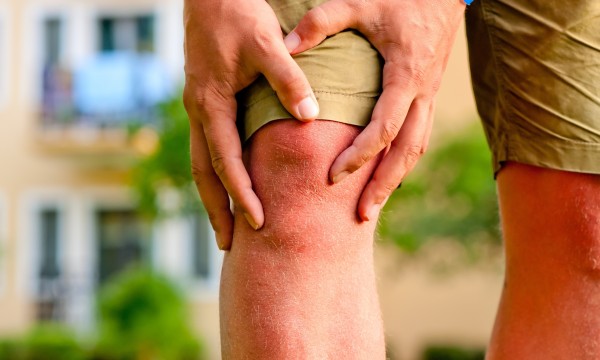Osteoarthritis (or "OA") happens when your articular cartilage begins to weaken and break down. The causes of osteoarthritis aren't entirely clear just yet, but the mechanics of why and how it happens are fairly well known. Here's a quick guide to osteoarthritis and cartilage damage.
- Browse Categories
- All Tips
-
Home & Garden
- All
- Appliances
- Bathroom
- Cleaning
- Crafts
- Decorating
- Electrical
- Flooring
- Furniture
- Garage Door
- Gardening
- Green Living
- Heating
- Home Alarm Systems
- Home Maintenance
- Home Remedies
- Home Security
- Home Staging
- House Sitting
- Junk Removal
- Kitchen
- Lawn Care
- Lock Systems
- Moving
- Outdoor Living
- Pest Control
- Plumbing
- Renovation
- Roofing
- Snow Removal
- Storage
- Tools
- Tree Service
- Health
- Family
- Travel
- Auto
- More Tips

Osteoarthritis and cartilage damage: a quick guide
October 6, 2015

What is articular cartilage?
Articular cartilage (the tissue that allows your bones to glide against each other, which helps to protect your joints) is mostly water — 80 percent, in fact. Its high water content helps it to cushion the bones from trauma. Cartilage derives its water from the synovial fluid that bathes and lubricates the bones in a joint.
There are three essential elements to cartilage.
- Collagen. This protein comes in the form of rod-shaped fibres that are the main building block for skin, tendons, bones and other connective tissues. Collagen is a key ingredient in cartilage; strengthening it and helping it resist being pulled apart when its under pressure or subjected to other traumas.
- Proteoglycans. Cartilage owes its high water content to proteoglycans — molecules that have the unique ability to soak up and hold fluid in the cartilage, allowing it to flow in and out as the pressure on a joint increases and decreases. Strands of proteoglycans team up with collagen to form a web-like, water-filled matrix that provides the cartilage with its spongelike resilience, its ability to absorb pressure and its surface slickness. OA (osteoarthritis) begins with the breakdown of this matrix of proteoglycans and collagen.
- Chondrocytes. Scattered throughout cartilage, these cells are responsible for synthesizing and repairing your cartilage's "scaffolding" — namely, its collagen and proteoglycan molecules.
What causes OA?
As cartilage breaks down, it can no longer cushion bones or prevent them from rubbing against each other. In addition, bony swellings or spurs (known as osteophytes) may develop around the edge of bones in response to pressure on them. These changes lead to the symptoms that people with osteoarthritis know all too well: pain, stiffness and restricted range of motion.
The cause of primary osteoarthritis — what triggers joint cartilage erosion — is not yet known. The disease process apparently begins when destructive enzymes damage the network of collagen fibres that maintain the structure of cartilage. With its collagen "superstructure" damaged, cartilage then swells with water, becoming softer and more vulnerable to stress and it starts to wear away.
Age is the most powerful predictor of whether a person develops osteoarthritis. The condition is rare in young people, but becomes increasingly more common in older age groups. But don't misunderstand: though OA correlates with age, it age alone isn't the cause. Instead, it now appears that factors associated with aging — and quite a few other factors as well — can make people susceptible to OA and cause their condition to worsen.
If you're worried about osteoarthritis, keep this information in mind and use it to start a conversation with your doctor during your next appointment.







